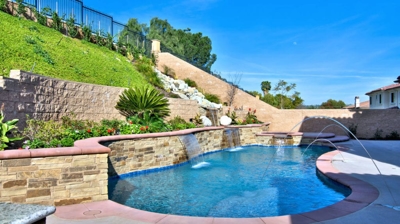Pool deck resurfacing is an aspect of home upkeep that is easy to overlook. The need to resurface a deck is dependent on how well-maintained it has been. There are many reasons why a person may need to resurface their deck.
Not only does a neglected deck look unsightly, but it can depreciate your home’s value. If pool deck maintenance is put off for too long, it may begin to damage your pool’s structural integrity. This is a much more costly repair project that is easily preventable.
Determining whether it’s time for a resurfacing isn’t just a question of whether it has completely deteriorated. The decking may still appear rather new, but resurfacing is a part of regular maintenance and upkeep for your backyard pool area.
The surface of a pool deck can be a good indicator of what’s going on underneath. You should be aware of many signs of erosion or weather damage to protect your investment. Your pool will give you signs it is in need of some of repair you just need to know what to look for.
1. Stains
Concrete pool deck resurfacing has a number one enemy. Staining happens on concrete pool decks far more often than you’d think. If the concrete around your pool is white, it is only a matter of time before this happens.
Many factors contribute to the how quickly concrete will begin to stain. Salt, chlorine, dirt, chemicals, hard water, and animal waste are just a few of the factors.
To fix staining issues you can choose to have your concrete deck completely sanded or ground down to reveal a new surface. This new surface can be stained or painted to your preference or to cover the discolored area. It’s a good idea to use a sealer after any type of project involving the surface of your deck.
Concrete is damaged by moisture over time if not protected.
2. Flaking
Flaking and peeling are a common problem of a pool deck. These problems occur because of moisture. Water overflow and transfer from your pool can cause pool deck surfaces premature damage.
Flaking concrete is best repaired by sanding or refinishing. If you have wood decking around part of your pool, it can also be refinished, but first, you must assess the interior damage of the boards. If rotting has occurred, you will most likely have to replace your deck.
This is mostly for safety reasons as rotted wood can be structurally unsound.
3. Cracks
Cracks are bad news. Cracks usually happen on concrete decks. Cracks can be signs that the ground underneath your pool is moving. The cracks can cause damage to the joints laid under the foundation of your pool.
If this were the case, you’d then have a major remodeling project on your hands. Be on the lookout for signs of shifting. If you have a wooden deck your boards will begin to buckle and splinter.
Concrete is much more susceptible to cracks than wood. Especially if used for a pool deck. Any small crack compromised by water can grow to be an overwhelming issue that is unsafe for your family.
4. Discoloration
You can repair uneven color or damaged surfaces by resurfacing a pool’s deck. Discoloration happens for many different reasons. Sun damage is usually the prime suspect.
Discoloration can also occur due to incomplete paint application or exposure to pool chemicals. You can apply acid-based resurfacing treatments to your deck’s surface. The acids will remove discoloration from areas, which can prevent the need for further restoration work.
You can prevent water-based discoloration with regular pool cleaning and maintenance.
5. Texture
Resurfacing the texture of your pool deck is one of the simplest repairs on this list. Texture is integral to preventing cracks. Uneven texture can cause water to collect or seep into cracks on the deck’s surface.
The texture of the deck can be intentional and decorative or can be signs of damage to come. Surface stamping is a popular feature and entails a design embossed into the wet cement. Some texture can even provide a non-slip surface for an otherwise slick deck. This is a wonderful option if you have children or elderly people in your household.
6. Structural Damage
Many pool deck resurfacing signs are not something you should ignore. Cracks and discoloration can be just the beginning. If left unattended small issues can grow into larger problems.
Quite literally, cracks can begin to expand in concrete. Wood begins to buckle. The foundation of your pool can even become compromised.
Structural damage is what you are trying to avoid at all costs. This is the most expensive end of your pool problems. Cracks can grow and damage the foundation leading to an expensive construction project.
Set a Schedule
Pool deck resurfacing is highly manageable. Keeping a regular schedule of maintenance and cleaning is key to helping keep your pool in tip-top shape. This can help you avoid major refinishing projects, saving you time and money.
Major renovation is unnecessary if you will just carry out some routine pool procedures. If you find yourself in an undesirable position with the status of your pool deck, you can try to repair the deck yourself. If this is out of your wheelhouse of experience, do not be afraid to contact a professional who can properly assist you with your repair. You’ll be happy you did.



